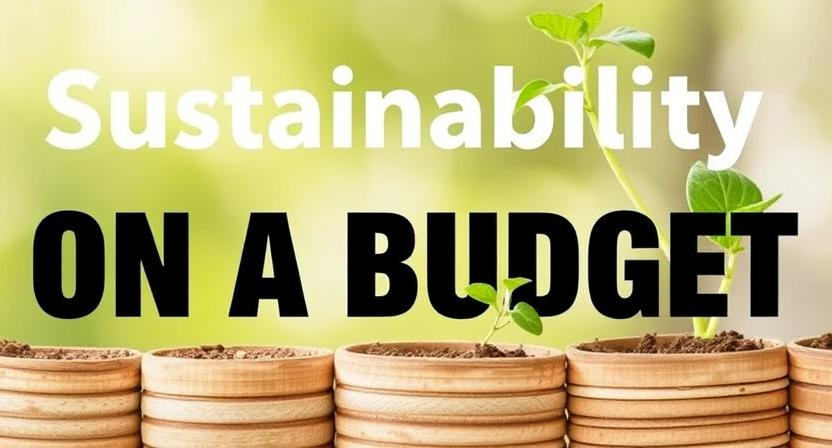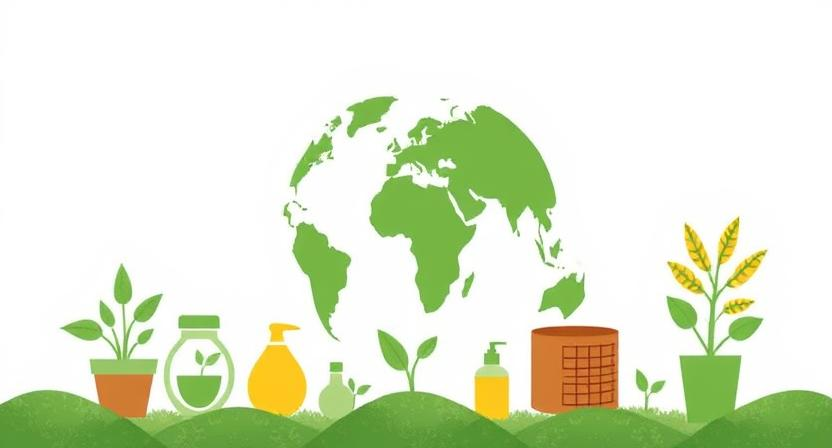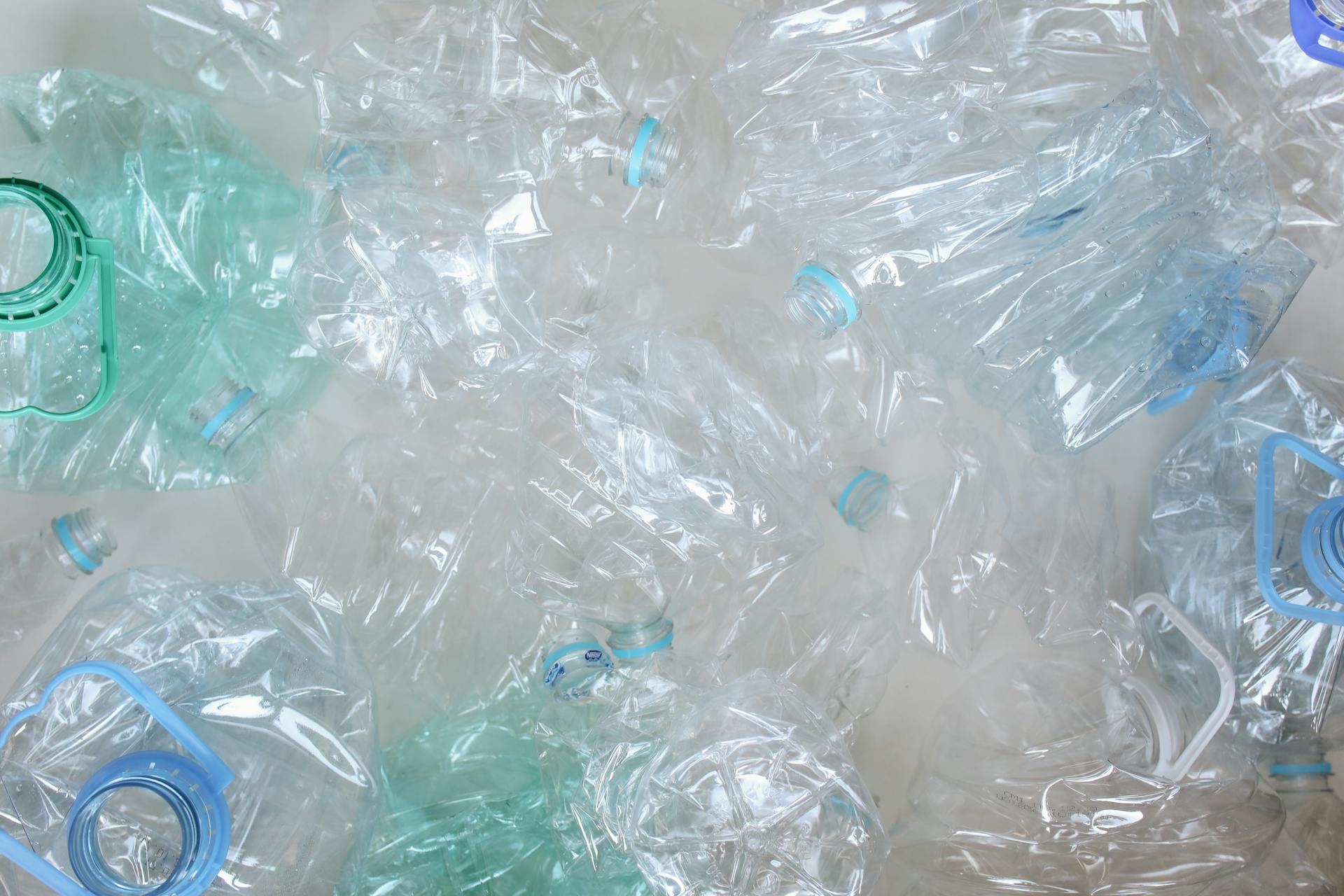Easy Ways to Reduce Energy Consumption at Home

Lowering your thermostat by just a few degrees in the winter and raising it slightly in the summer can have a significant impact on reducing your energy consumption. Consider investing in a programmable thermostat to automate this process and further optimize your energy usage. Ensuring your home is well-insulated by sealing any drafts and properly maintaining windows and doors can also contribute to minimizing the need for excessive heating or cooling.
Switching to energy-efficient LED light bulbs throughout your home is a simple yet effective way to cut down on electricity usage. These bulbs last longer and consume less energy than traditional incandescent bulbs, helping you save money on your utility bills in the long run. Remember to turn off lights when they are not in use and take advantage of natural light during the day to further reduce your reliance on artificial lighting.
Tips for Shopping Smarter and Reducing Waste
When it comes to shopping smarter and reducing waste, being mindful of your purchases is key. Start by making a shopping list before heading to the store to avoid impulse buys and unnecessary items. Additionally, opt for products with minimal or recyclable packaging to decrease waste generated from packaging materials. By planning your shopping trips and choosing products with less packaging, you can minimize your environmental impact while also saving money in the long run.
Another way to shop smarter and reduce waste is to consider buying in bulk or choosing products with refillable options. Buying in bulk can help reduce packaging waste from individual portions, and opting for refillable products can significantly cut down on single-use containers. Look for stores that offer bulk bins for items like grains, nuts, and spices, and consider investing in refillable options for household items like cleaning supplies and personal care products. Making these small changes in your shopping habits can contribute to a more sustainable lifestyle while also being cost-effective in the long term.
How to Make Your Own Eco-Friendly Cleaning Supplies
Making your own eco-friendly cleaning supplies is a simple and cost-effective way to reduce your environmental footprint while keeping your home clean and safe. With just a few basic ingredients like vinegar, baking soda, and essential oils, you can create effective cleaners for various surfaces in your home. For example, mixing equal parts of water and vinegar makes a great all-purpose cleaner that can tackle grease and grime in the kitchen or bathroom.
Another easy DIY cleaning solution is using baking soda as a gentle abrasive cleaner for scrubbing sinks, tubs, and countertops. Simply sprinkle some baking soda onto the surface, add a little water to form a paste, scrub, and then rinse away for a sparkling clean finish. Additionally, adding a few drops of essential oils like tea tree or lavender not only adds a pleasant scent but also provides antibacterial and antifungal properties to your homemade cleaners. By making these small changes in your cleaning routine, you can contribute to a healthier home environment and a greener planet.
Maximizing Natural Light in Your Home to Save on Electricity
Natural light not only enhances the aesthetic appeal of your home but also helps you reduce your energy consumption. To make the most of natural light in your living spaces, consider strategically placing mirrors opposite windows to reflect and amplify the incoming sunlight. Additionally, opting for sheer curtains or blinds instead of heavy drapes can allow more light to filter through while still providing privacy when needed.
Another way to maximize natural light is by keeping your windows clean to ensure unobstructed sunlight can brighten up your rooms. Trim any overgrown bushes or trees that may be blocking natural light from entering your home. Additionally, choosing light-colored paint for your walls and furniture can help bounce light around the room, creating a brighter and more welcoming atmosphere.
The Benefits of Composting and How to Get Started
Composting is a simple and effective way to reduce waste and enrich your garden soil. By composting organic materials like food scraps, yard waste, and paper products, you can divert them from landfills where they would contribute to greenhouse gas emissions. Instead, these materials break down naturally to create nutrient-rich compost that can be used to improve the health of your plants and reduce the need for chemical fertilizers.
To get started with composting, you’ll need a bin or designated area in your backyard where you can pile up your organic waste. Make sure to balance the greens (nitrogen-rich materials like food scraps and grass clippings) with browns (carbon-rich materials like dried leaves and newspapers) to create a healthy compost pile. Regularly turning the pile to aerate it and adding water as needed will help speed up the decomposition process. Over time, you’ll have a valuable resource that not only benefits your garden but also helps to reduce your environmental impact.
Choosing Sustainable and Affordable Transportation Options

When it comes to selecting transportation options that are both sustainable and affordable, there are various choices to consider. Public transportation, such as buses, subways, and trains, can be excellent options for daily commuting or leisurely outings. These modes of transport not only help reduce carbon emissions but also save you money on fuel and maintenance costs for a personal vehicle.
Another sustainable and economical option is biking. Cycling is not only environmentally friendly but also a great way to stay active and fit. Investing in a quality bike and safety gear can be a one-time expense that pays off in the long run by saving on transportation costs and contributing to a healthier lifestyle. Consider biking for short trips or commuting to work if feasible in your area.
Repurposing and Upcycling Furniture and Household Items
Repurposing and upcycling furniture and household items can be a creative and environmentally friendly way to breathe new life into old pieces. Instead of throwing away old furniture that may seem outdated or worn, consider giving it a fresh coat of paint or repurposing it for a different use. For example, an old wooden ladder can be turned into a unique bookshelf or a vintage suitcase can be transformed into a charming bedside table.
By upcycling household items, you not only reduce waste but also add a touch of uniqueness to your living space. Get creative with materials like glass jars, tin cans, or wine bottles to create decorative vases or storage containers. Old clothing can be repurposed into new throw pillows or tote bags, adding a personal touch to your home decor while keeping textiles out of the landfill.
Growing Your Own Fruits, Vegetables, and Herbs at Home
Growing your own fruits, vegetables, and herbs at home is not only a rewarding experience but also a sustainable way to reduce your environmental footprint. By cultivating your own produce, you have control over the growing process, ensuring that no harmful chemicals are used in the production. Additionally, homegrown fruits and vegetables are fresher, tastier, and often more nutritious than store-bought counterparts, providing you with a direct source of high-quality, organic produce.
Not only does growing your own food offer numerous health benefits, but it also helps to minimize transportation emissions associated with importing produce from faraway places. By planting a diverse range of fruits, vegetables, and herbs in your garden, you can create a mini ecosystem that attracts pollinators, improves soil quality, and contributes to biodiversity. Embracing a home gardening practice not only promotes self-sufficiency but also fosters a deeper connection with the natural world, inspiring a more sustainable way of living.
Investing in Energy-Efficient Appliances for Long-Term Savings
Investing in energy-efficient appliances can lead to significant long-term savings on your utility bills. These appliances are designed to use less energy without compromising on performance, helping you reduce your carbon footprint and lower your electricity costs. By replacing outdated appliances with energy-efficient models, you can enjoy the dual benefit of saving money and contributing to a more sustainable future.
When shopping for energy-efficient appliances, look for products with the ENERGY STAR label, which indicates that they meet strict energy efficiency guidelines set by the Environmental Protection Agency. While the initial cost of these appliances may be higher, the savings you’ll see on your energy bills over time make them a wise investment. From refrigerators and washing machines to water heaters and air conditioners, there are many energy-efficient options available to suit your needs and budget.
Reducing Water Usage in Your Home with Simple Changes
There are various easy adjustments you can make in your daily routine to cut down on water usage in your home. One simple change is to fix any leaky faucets or pipes promptly, as even small drips can add up to significant water wastage over time. Additionally, opting for shorter showers and turning off the water while brushing your teeth are quick habits that can contribute to reducing water consumption.
Another way to save water is to be mindful of your laundry habits. Wait until you have a full load before running the washing machine and consider using the appropriate water level setting to avoid unnecessary waste. Reusing towels more than once before washing them can also help minimize water usage in your household. By implementing these small changes, you can make a positive impact on both the environment and your water bill.
The Importance of Buying Second-Hand and Supporting Thrift Stores

Buying second-hand items and supporting thrift stores can have a positive impact on both the environment and your wallet. By opting for pre-loved goods, you are helping reduce the demand for new products, which in turn lowers the overall carbon footprint associated with manufacturing and transportation. Thrift stores are also treasure troves for unique finds that can add character and charm to your home decor without breaking the bank.
Additionally, buying second-hand often allows you to discover high-quality items at a fraction of their original cost. Whether it’s clothing, furniture, electronics, or books, opting for gently used goods can help you save money while still enjoying quality items. Thrift shopping can also be a fun and sustainable way to engage in conscious consumerism, as you give new life to items that would have otherwise ended up in landfills.
Tips for Creating a Zero-Waste Kitchen
When aiming to create a zero-waste kitchen, starting with proper meal planning can significantly reduce food waste. Make a shopping list before heading to the store, and only buy what you need. Utilize leftovers efficiently by incorporating them into new meals or freezing them for future use. Composting organic waste such as vegetable peels, coffee grounds, and eggshells can further minimize what goes into the trash.
Investing in reusable and sustainable kitchen items, such as cloth napkins, beeswax wraps, and glass containers, can help eliminate the need for single-use plastics. Opt for buying in bulk to reduce packaging waste, and consider shopping at local markets or stores that offer package-free options. Additionally, choosing products with minimal or compostable packaging can aid in fostering a more sustainable kitchen environment.
Saving Money and Resources by Repairing Instead of Replacing
In a world where throwaway culture often prevails, choosing to repair items instead of automatically replacing them can result in significant savings for both your wallet and the environment. When a household appliance breaks down or a piece of furniture becomes worn, consider exploring repair options before rushing to buy something new. Sometimes a simple fix or a replacement part can bring the item back to full functionality at a fraction of the cost of buying a replacement.
Not only does repairing instead of replacing save you money, but it also reduces the demand for new resources and helps in cutting down on waste generation. By prolonging the lifespan of your belongings through repairs, you are actively participating in sustainable consumption practices. In a society heavily focused on consumption and disposability, embracing the ethos of repairing what you have can lead to a more mindful and environmentally friendly lifestyle.
Utilizing Public Transportation and Carpooling to Reduce Emissions
Utilizing public transportation and carpooling are effective ways to reduce greenhouse gas emissions and lessen the environmental impact of daily commutes. By opting for buses, trains, or carpools, individuals can cut down on the number of vehicles on the road, thus decreasing overall air pollution levels. Sharing rides with others not only helps to lower individual carbon footprints but also promotes a sense of community and cooperation among commuters.
Public transportation systems are continuously being improved to offer more convenient and eco-friendly options for travelers. By supporting and utilizing these services, individuals can contribute to the reduction of traffic congestion and exhaust emissions in urban areas. Carpooling, on the other hand, provides a cost-effective and sustainable alternative to solo driving, fostering a more eco-conscious approach to transportation habits.
How to Reduce Plastic Use in Your Daily Life
Plastic is everywhere in our daily lives, but its impact on the environment is undeniable. One easy way to reduce plastic use is by carrying a reusable water bottle with you. By refilling your bottle at home or using water fountains, you can avoid the need for single-use plastic bottles. Additionally, investing in a set of reusable shopping bags can drastically cut down on the plastic waste generated from grocery trips and errands. Just keep them in your car or by the door for easy access when heading out.
The Benefits of Eating Plant-Based Meals for Your Wallet and the Environment

Making the switch to plant-based meals not only benefits the environment but also your wallet. Plant-based foods, such as fruits, vegetables, grains, and legumes, are often more affordable than meat and dairy products. By incorporating more plant-based options into your diet, you can save money on groceries while still enjoying delicious and nutritious meals. Additionally, plant-based diets have been linked to lower rates of chronic diseases, which can lead to reduced healthcare costs in the long run.
Choosing plant-based meals can also have a positive impact on the environment. Animal agriculture is a significant contributor to greenhouse gas emissions, deforestation, and water pollution. By reducing your consumption of animal products and increasing your intake of plant-based foods, you can help lower your carbon footprint and lessen the strain on natural resources. Plant-based diets are a more sustainable choice that supports biodiversity and helps mitigate the effects of climate change.
• Plant-based foods are often more affordable than meat and dairy products
• By incorporating plant-based options into your diet, you can save money on groceries
• Plant-based diets have been linked to lower rates of chronic diseases, reducing healthcare costs in the long run
• Animal agriculture is a significant contributor to greenhouse gas emissions, deforestation, and water pollution
• By reducing consumption of animal products and increasing intake of plant-based foods, you can lower your carbon footprint
• Plant-based diets support biodiversity and help mitigate the effects of climate change
Exploring DIY Projects for a More Sustainable Lifestyle
DIY projects offer a fantastic way to incorporate sustainability into your lifestyle. From upcycling old furniture to creating homemade cleaning products, there are numerous opportunities to reduce waste and save money. Repurposing items that may otherwise end up in landfills not only adds a personal touch to your living space but also promotes environmental consciousness.
Engaging in DIY projects can also foster a sense of creativity and self-sufficiency. By learning new skills and techniques, you empower yourself to take control of your consumption habits and minimize your ecological footprint. Whether it’s constructing your own furniture or making your own cloth bags, embracing a sustainable DIY approach can lead to a more fulfilling and environmentally friendly way of living.
Tips for Conserving Water in Your Garden or Yard
Incorporating mulch in your garden can help retain moisture, reducing the need for frequent watering. Mulch acts as a barrier, preventing water from evaporating quickly and keeping the soil consistently moist for plant growth. Additionally, consider planting native and drought-resistant plants that require less water to thrive in your garden or yard. These plants are adapted to the local climate conditions and can withstand periods of limited watering, making them a sustainable choice for conserving water outdoors.
Another tip for conserving water in your garden or yard is to water your plants early in the morning or late in the evening to minimize evaporation loss. Watering during these cooler times of the day allows the plants to absorb moisture more effectively, ensuring that the water reaches the roots where it’s needed most. Additionally, using a watering can or drip irrigation system instead of a hose can help target the water directly to the base of the plants, avoiding unnecessary runoff and optimizing water usage in your outdoor space.
The Environmental Impact of Fast Fashion and How to Shop Responsibly
Fast fashion has become a widespread phenomenon in the clothing industry, leading to grave environmental consequences. The constant production of cheap, trendy clothes has resulted in significant greenhouse gas emissions, water pollution, and textile waste. This rapid turnover of clothing items contributes to the depletion of natural resources and the exploitation of labor in developing countries where many garment factories are located.
To shop more responsibly in the face of fast fashion’s environmental impact, consumers can opt for sustainable clothing brands that prioritize ethical practices and use eco-friendly materials. Choosing quality over quantity and investing in timeless pieces that can be worn for a longer time can help reduce the demand for fast fashion products. Additionally, buying second-hand clothing or participating in clothing swaps are great alternatives to supporting the cycle of fast fashion. By making conscious decisions about our clothing purchases, we can play a part in minimizing the harmful effects of the fast fashion industry on the environment.
Creating a Budget-Friendly Sustainable Home Decor Scheme
When it comes to creating a budget-friendly sustainable home decor scheme, there are plenty of simple and eco-friendly options to consider. One way to achieve this is by incorporating repurposed or upcycled materials into your decor. For example, you can give new life to old furniture by sanding it down and painting it with non-toxic, eco-friendly paint. Additionally, you can browse thrift stores or online marketplaces for second-hand decor items that align with your sustainable goals.
Another way to enhance your home decor sustainably on a budget is by incorporating plants and natural elements into your space. Not only do plants add a touch of greenery and beauty to your home, but they also help purify the air and create a healthier indoor environment. Look for low-maintenance houseplants that suit your space and lifestyle, and consider incorporating sustainable materials like bamboo, jute, or cork into your decor for an eco-friendly touch.




